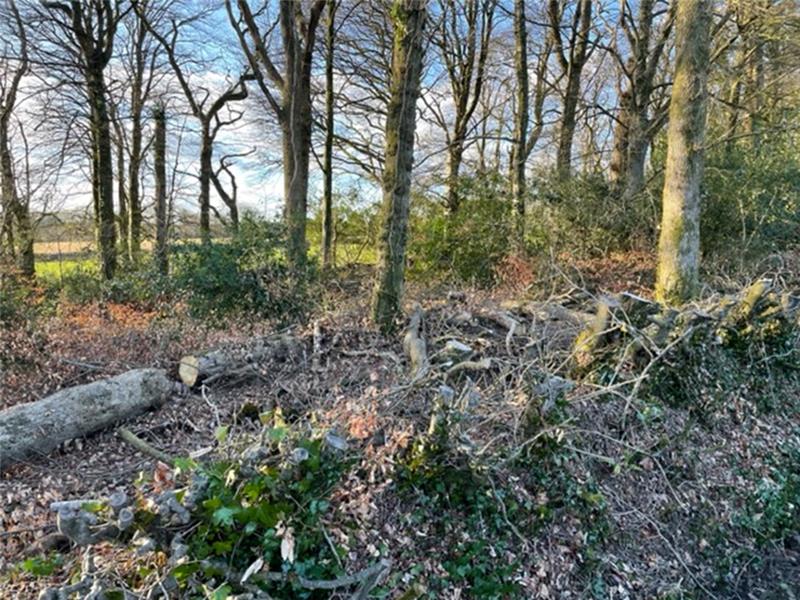Trees are rightly afforded protection through TPOs, conservation areas and the requirement for felling licenses. Various exemptions apply to that including ‘dangerous/nuisance’ trees and landowners have the right to fell up to 5m2 of timber on their land each year with no need to apply for permission.
To put that last point in context, it is probably equivalent to two perfectly healthy, mature, oak trees of somewhere around 100 years old or one up to 200 years old – don’t quote me but that’s a rough idea. Of course, dangerous trees need to be felled if they provide a risk to people or property, although nuisance is a bit subjective, isn’t it?
I have no issues with good landowners managing their land and provided they do it in a sustainable way (i.e. they plant trees as well as fell them) as they have been doing it for hundred of years and have created the countryside we know and love, woodlands usually need management, they don’t fare very well if you just leave them to it.
However, my issue, working in housing development, is that as part of the planning process, in most areas of the country we are required to undertake ecology surveys before development and then demonstrate how we will show a 10% net gain in site biodiversity once a site is completed. This will become mandatory on all sites from November this year.
We do this using on site planting, bee bricks, bat boxes etc. on most sites we will either need to dedicate some space to planting and BD or, where that is not possible or enough to demonstrate the required BNG, we will have to buy credits so that work is caried on off site. I have no issue with this although fear we are paying lip service rather than creating any remotely valuable habitat or improving developed spaces but it is a step on the right direction.
Of course, the system has been ‘played’ since this was introduced by sites being stripped before initial ecology surveys are conducted and its good to see provisions to tackle this included within the Levelling up and Regeneration Bill to stop that, or at least to reduce it. Hopefully, this goes towards making the policy more effective, although I doubt it will be enough, in many cases, to deliver any tangible benefit.
Here is the crux of my consternation at the moment – there is a strip of broadleaved woodland near my home, which links to a much larger area of woodland with a stream, it is bounded by established Cornish hedges and has managed, somehow, to avoid any noticeable invasive species and so has a mix of mature and semi mature trees and a healthy ground cover. All in all a good and diverse habitat, providing a corridor to a much more significant area of woodland.
This is an area with a overhead BT line running down one edge, the trees are pretty healthy, no Ash die back or any other noticeable issues, but branches, fairly regularly fall onto, the lines I have never seen the lines broken they just get pulled of a few poles and so sag – no risk to life or limb, just a bit saggy. The lines wont ever fall on the road as there is a wide verge.
BT are regularly there replacing poles, fixing the lines etc. and so I accept this has significant cost implications to them. However, this winter, they have taken it upon themselves, or via the landowner, to fell all of the trees in the 2m or so on the edge of the woods. So that is 20 or so, healthy, semi mature trees that have been felled, they have left the wood piled so there is at least some value to what is left behind.
So as developers we are incurring additional costs and losing homes to, most of the time, play lip service to BNG – lets be honest, most of the time it is an afterthought, it works on the BD metric calculator but who actually thinks it is actually, significantly, valuable habitat being created most of the time?
Yet, in an attempt to save money on repairing overhead lines, which are probably not going to be used for many more years, BT have, or have had a group of native, healthy trees felled. I find that absurd and mildly offensive, how can the government be driving us to improve BD with one hand and yet allowing a utility provider to destroy, or have destroyed in their name, a swathe of natural habitat with the other.
Answers on a postcard please ‘cause I can’t work it out!
Ask Neil – HATC Webinar | Viability Workshop (‘Virtual Coffee Break’) 10:00-11:00
We have a quarterly online meet up where we talk about things like this, issues of the day, things that people working in the industry are experiencing or worried about. They started as a follow up to our training sessions for questions that come up after, things people have forgotten etc. but we are now widening them to include whatever people want to talk about, whether its training needs or that annoying consultant.
Next session: Friday 5 May
Please check the website for details.
HATC Courses for Development
Our experienced trainers are able to help you design training sessions to meet your particular requirements.
We also provide in-house training courses upon request.
Click here to find out more.
About Neil
Neil Clements has worked in the housing industry since 1997, most of that time within the affordable sector but also with a main contractor, consultant and private developer. He now runs the M3/HATC training programme, which focuses on AH development and related staff covering the whole development process and project management (APM syllabus). The training covers lots of legislation and procedure but also comes from years of learning the hard way.
